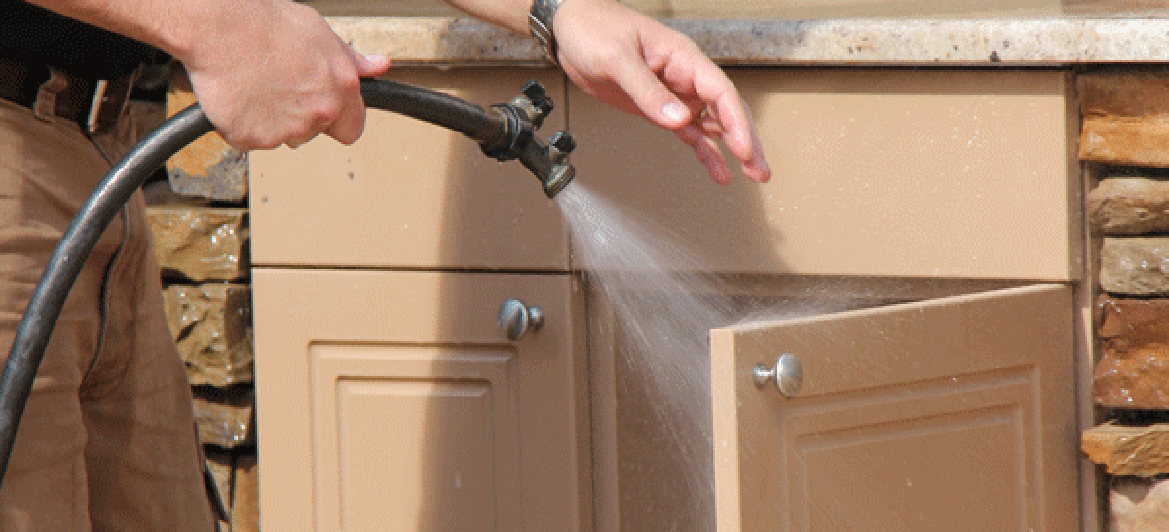
Catherine Lane/iStock
The easiest way to clear up this question, of course, is to simply ask the company or contractor you’re using what is the tipping policy before you even agree to a deal. Yeah, it’s a bit awkward—but it’s nothing compared with getting it completely wrong. And since tipping customs can vary a lot by region—people in Bismarck, ND, may not tip the same as those on New York’s Upper East Side—you could get some community advice from people who live nearby.
Author and manners expert Amy Alkin suggests you play it straight and say: “I’m new in this neighborhood, and I want to do the right thing, and I’m wondering, do you know what people around here tip?”
Still looking for guidelines? Here’s your crash course on whom to tip, how much to give, and how to show your appreciation in other ways as well. No gratuity necessary!
Handymen
In some places, a handyman earns more than $100 an hour and doesn’t expect a tip. However, if you’ve found a go-to helper who frequently does odd jobs around the house for, say, $20 an hour—change high lightbulbs, move heavy objects, wax floors— then a holiday or postproject gift equal to his daily fee is appreciated.An Angie’s List survey of 5,000 home service professionals around the U.S. found that only a small percentage of handymen, 7%, say they routinely receive tips, although that number jumps to 28% when they’ve performed extra services and kindnesses beyond the original scope of work.
Painters
Painters generally don’t expect tips, especially if you’ve hired a small company where the boss and his brothers are painting your house. Tipping is a must, however, if you ask a painter to touch up that little scuff on the dining room wall, which wasn’t in the original contract. Most painters will oblige, and you should reward their generosity with a $15 to $20 tip if the extra work takes an hour or less.Contractors/remodelers
When it comes to general contractors, the question isn’t how much you should tip but whether you should at all. And in general, the answer is no.Please, Mr. Postman
However, you may choose to add a clause in your cost-plus remodeling contract that pays a bonus if the contractor completes the project early or under budget. This is more an incentive than a show of appreciation, and can be a percentage of estimated money saved or a flat fee, perhaps $500 to $1,000 for a major project like a large kitchen remodel.
Other ways to show appreciation for a job well done is to write a great review of the contractor on sites such as Yelp or its local equivalent. Looking for a more personal touch? If you’ve gotten along well with the general contractor who built your house, consider inviting him to dinner so he can see how much you love the fruits of his labor.
Decorators
Decorators, who often charge hourly and a percentage of whatever they purchase for you, also don’t usually expect tips. Referrals, yes.Actually, it’s common for a decorator to give the client a little present after a particularly lucrative job—a gift bag or the perfect bowl to set on the new dining room table.
Plumbers, electricians, the cable guy
Again, no tipping is necessary because these skilled tradesmen work either for themselves—as a general rule, you don’t have to tip business owners—or for large companies that may prohibit tipping.Even though tipping is inappropriate, it’s always nice to offer people who work in your home a cold drink (um, not alcohol), and to thank them specifically for their prompt and skilled work.
Also, give great workers a heartfelt shoutout on review sites such as Yelp or Angie’s List. It is, in fact, the gift that keeps giving.
Lawn care workers and landscapers
It’s impractical and unnecessary to tip the guys who mow your lawn
every week, though it’s nice to put a pitcher of cold water out for the
workers. If the same crew arrives every Thursday, at the end of the
season you can show your appreciation with $20 to $50 cash tip each.However, when you ask a landscaper to do something extra, like prune a hanging branch, slip him something extra, from $10 to $20 depending on how long the task takes.
Alkin says we all have an “inner accountant” who notices when others are “taking us for a ride.”
“If you’re generous, others won’t approach you in a nickel-and-dimey, suspicious way,” she says.
House cleaners
If the same cleaning lady makes your home sparkle each week, a big
tip is expected during the holidays, typically a week’s wages presented
in a card with a personal message of appreciation.If you hire a cleaning crew, tipping is not expected or required. At the end of the year, or after a major project, however, you can give each crew member a small gift, or divide the price of a cleaning session among the crew.
To order your copy of Remodeling Hell, CLICK HERE
For more information about Remodeling Hell, CLICK HERE
For more information about the Summit Murder Mystery series, CLICK HERE
Follow me on TWITTER
Friend me on FACEBOOK
Follow me on PINTEREST


